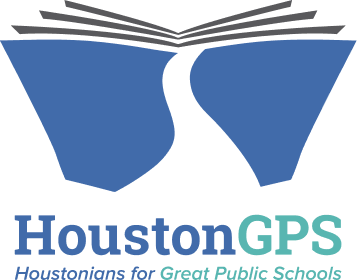Houston ISD Board Meeting Recap 9.12.24
The Houston ISD Board held their August regular board meeting on September 12, 2024. Highlights include:
All students deserve to graduate both college and career ready. HISD is on track to meet postsecondary readiness targets based on 2023 graduate outcomes, but equity gaps show the District still has significant work to do to ensure every student graduates with meaningful postsecondary opportunities.
Postsecondary outcome data lag by a year and the results do not reflect the new, data-backed programming the District has implemented to support both college and career readiness.
The District is also meeting its goal for academic growth for students with disabilities, but may need to make technical adjustments due to lower than expected baseline data.
BOARD VOTES
All agenda items were approved.
Agenda Item | In Favor | Opposed |
Goal Progress Monitoring Report | 9 | 0 |
Constraint Progress Monitoring Report | 9 | 0 |
Tax Rate Adoption | 9 | 0 |
Consent Agenda | 9 | 0 |
STUDENT OUTCOME SPOTLIGHT
Houston ISD is on track for its goals and progress measures for college and career readiness but equity gaps persist.
This month, the Board monitored its goals for college, career, and military readiness (CCMR) and academic growth for students with disabilities. Overall, the District met its goal targets for last year, and for CCMR, met each of its goal progress measures.
The District measures CCMR based on the percentage of graduates who are both college ready based on Texas Success Initiative (TSI) standards, which are based on college readiness exams like SAT, and career ready based on attainment of an industry based certification (IBC). Data for this goal lags by a year, so most of the report represents outcomes for the graduating class of 2023, prior to the changes made by this administration.
While only 12% of 2023 graduates met both college and career readiness indicators, HISD has set a five-year goal of 26%, which it is on track to meet. All student groups except for white and Asian students met subgroup targets for the District’s 2023 goal. Emergent Bilingual and students with disabilities met expected growth but remain the two subgroups of students who face the greatest achievement gaps in postsecondary readiness.


Looking separately at TSI readiness and IBC attainment illustrates additional disparities for students. For TSI, white and Asian graduates are disproportionately meeting college readiness standards, while all other subgroups face much lower outcomes. Conversely, for IBCs, Black, Latino, and economically disadvantaged students are more likely to attain an industry credential compared to their white and Asian peers.
It’s worth noting that historically many of the IBCs that students have attained in HISD are on the Texas Education Agency’s sunset list, which means they are being phased out because they were determined to not be rigorous enough for career readiness. This, combined with lower TSI readiness, indicates a need for a comprehensive strategy to equitably support students who face greater educational barriers to postsecondary success.
HISD has made strides this year in implementing policies aimed at closing these gaps, which are not reflected in the lagged data. In particular, the District has implemented an opt-out policy for advanced coursework, which should ensure more students have the opportunity to participate in college-level courses. The District has also improved access to career and technical education courses that are tied to high-wage, high-demand industries by establishing four programs of study that are offered across the District at zoned high schools.
As these new, equity-focused policies are implemented, we hope to see more students graduating with meaningful postsecondary choices and achievement gaps closing for students of color. All students deserve to graduate both college and career ready and these gaps in outcomes are worth close monitoring by the Board.

HISD exceeded its goal target for students with disabilities but its baseline for interim assessment growth is lower than expected.
Students with disabilities are often a student subgroup that faces the largest achievement gaps across student outcome data. HISD is placing substantial emphasis on supporting special education in service of meeting the intervention exit criteria for compliance, but is also committed to improving outcomes for students with disabilities.
The District’s goal measures this progress based on student growth as measured by the state’s academic accountability system. HISD is on track for this goal, with nearly every student subgroup meeting growth targets.


In addition to its goal, HISD measures growth based on its interim assessment, NWEA MAP, which was implemented for the first time last year. The end of last year set the baseline for future monitoring, which fell short of HISD’s original projection by five percentage points.
This particular metric is an ambitious goal aimed at having students meet substantially more than expected growth for the year. Higher than average growth is necessary to close achievement gaps for students with disabilities. The Board and administration will need to reconcile the new baseline and how it impacts future targets and ultimately continue to ensure students with disabilities receive the support necessary to meet their learning needs.


Big Picture: HISD is on track to meet postsecondary readiness and special education targets but has hurdles to scale with equitable outcomes. For CCMR, the data lag by a year and the results do not reflect the new programming the District has implemented to support both college and career readiness.
BOARD DISCUSSION HIGHLIGHTS
Board members continue to emphasize equity in student outcomes.

Rolando Martinez: HISD has some schools where 0% of students are TSI ready. The report shows Black and Latino students face barriers to college readiness compared to their white and Asian peers. What is the strategy to address these outcomes and ensure students have true choices in postsecondary programming?
Administration Response: The District wants to ensure both TSI readiness and IBC attainment increase. The primary focus for college readiness continues to be high-quality curricula and instruction. In particular, English III and Algebra II are significant components of college-focus exams. However, the work starts earlier to ensure students are proficient leading up to high school.
Advanced course access also plays a big role. Data show that kids who take college-level courses are more likely to attend college even if they do not pass.The District’s new opt-out policy for advanced courses provides every campus with a list of students who are eligible to support them in building their course catalog.

Audrey Momanaee: Emergent Bilingual students face larger achievement gaps than other student groups. What is the root cause for this disparity and how is the District supporting Emergent Bilingual students?
Administration Response: HISD’s Emergent Bilingual population in high school includes many students who are recent immigrants and new to the English language. The District is building scaffolds into the curriculum, like visuals alongside text to provide context clues for English development. Similarly, they are including cross-linguistic connections in materials to help teachers flag things that might be different between English and other languages. This year, they also wrote curricula for the ESL 1 and 2 course in high school for the first time.

Janette Garza Linder: For students who are behind proficiency in high school, what is the District doing to support them as they prepare to graduate?
Administration Response: All students receive access to SAT preparation and free testing. This year, they are moving the testing window to April to offer more preparation time. The District provides in person Saturday preparation sessions to support students leading up to college-exam testing. Additionally, 12th graders have access to a TSI course that helps prepare them for the TSI exam, which is the Texas version of the SAT.
Superintendent Miles gave an update on teacher retention and Board members dug into the data.
As school districts across Texas grapple with teacher retention, Superintendent Miles presented data linking HISD’s teacher evaluation system results with attrition. The report showed teachers with higher ratings on District spot observations and the teacher evaluation system were much more likely to stay with HISD than their peers. The majority of teachers leaving ranked in the bottom two tiers of evaluated teachers, which was true when controlling for NES status and looking at the teacher evaluation system in isolation.

Rolando Martinez: What is the District doing differently this year to retain teachers?
Administration Response: HISD engaged in a rigorous recruitment process for this year and through it made the vision for this administration clear. This ensures that newly hired teachers understand expectations and have an opportunity to make sure the District’s employment style fits with their needs in a workplace.
In addition to recruitment, the District continues to focus on support and salaries. Between overall compensation increases and the NES model, the average salary has increased by $9,000 across the District.

Janette Garza Lindner: Teacher ratings are based both on the evaluation system and spot observations. What is the District doing to make sure this process is understood and what has improved this year?
Administration Response: This year, executive directors are training every week for the first semester on the system to internalize the process and be able to consistently implement across the District. They have also revised their spot observation forms to account for different learning models, like Montessori. New and uncertified teachers will receive additional opportunities for feedback to support their growth.


Angela Lemond Flowers and Audrey Momanaee: Does HISD conduct exit interviews for teachers who are leaving the District?
Administration Response: HISD provides exit interviews upon request and an automatic process hasn’t been implemented in the District in the past. They are working on putting something in place but in the meantime, the online platform lets teachers state their reason for leaving to provide the administration with data.
Time Check: This month, the Board spent 60% of their meeting time focused on student outcome monitoring, excluding time spent hearing from community speakers.
Why this Matters: High-performing school districts have school boards that spend most of their time focused on student outcomes rather than operations. Lone Star Governance recommends boards spend at least 50% of their time engaged in student outcome monitoring.
